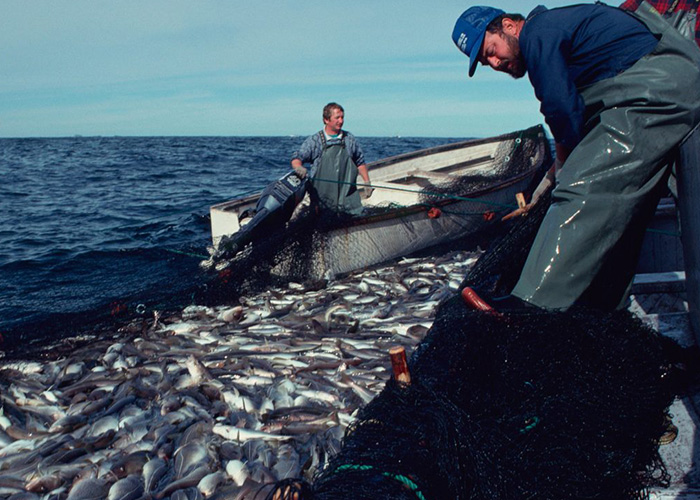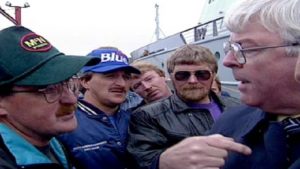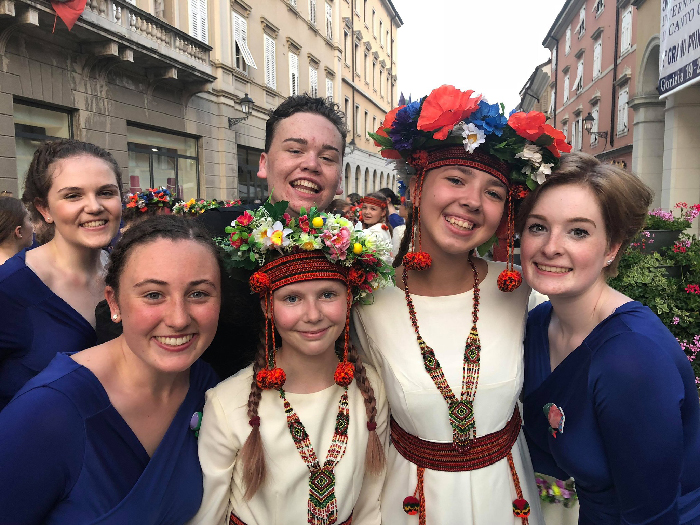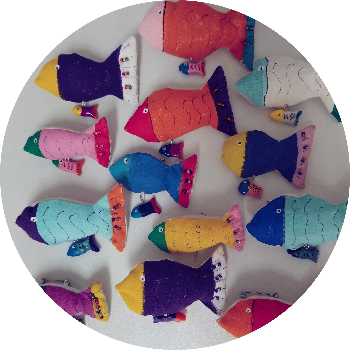FROM DESPERATION BLOOMS BEAUTY
By Heidi Wicks, BA'02, MA'19

The death of the fishery spawned a societal grief that many Newfoundlanders and Labradorians still feel generations later, whether they worked in the industry or not.
Artist and journalist Jenn Thornhill Verma (M.Sc.’07), was just 12 years old when John Crosbie announced on July 2, 1992 that there would be a two-year freeze on the fishery, primarily due to ecological factors and a devastating decline in the stock of northern cod off the east coast of Newfoundland and Labrador. Her award-nominated book, Cod Collapse: The Rise and Fall of Newfoundland’s Saltwater Cowboys, traces a lost way of life and digs into the stories of her family, including her Pop – one of the province’s first saltwater cowboys.
Fast-forward to when Ms. Verma was in her mid-thirties – she was having an existential crisis after learning that her father was dying.
“The talks with my father during that time helped me to dig back into what the moratorium meant for our family. In 1992 I was impressionable, figuring out who I was while our home and our province were facing an identity crisis. It wasn’t just a question of ‘without cod fishing, who are we?’. I came to learn how cod fishing had influenced every aspect of Newfoundland and Labrador’s existence – where people lived, how they lived and the traditions they held,” she said.
Eugene (Gene) Maloney lost employment, and was forced to reinvent himself overnight. His story is featured in Ms. Verma’s work, describing how he turned his talents to wooden boat building, as he observed the many changes around him.

“The Bay Bulls wharf where John Crosbie famously said, ‘I didn’t take the fish from the goddamn water,’ has become unrecognizable. It’s now a marine terminal servicing cargo ships and the offshore oil and gas industry. Some of the big fishing families like the O’Brien’s and Gatherall’s now have major tourism outfits, taking visitors out for whale- and bird-watching excursions. The site of Gene’s fishing stage has been replaced by his son (Wayne Maloney)’s small tour boat company.”
The industry with the most growth following the moratorium may be arts and culture.
REAFFIRMING CULTURE
Memorial’s former chancellor and alumna, Susan Dyer-Knight (B.Mus.Ed.’83, LLD’04), felt the effects of the moratorium just like everyone else. “It (the moratorium announcement) struck me like a bolt of lightning. We all knew it would bring grave damage to the place – economically, demographically and culturally. The desperation I felt that summer was really the impetus for forming the choir.” The choir, of course, was Shallaway. It was born in the summer of ’92 – the same summer the cod fishery fell into a deep sleep. “Partnering with young people to build this new organization was exciting. We aimed to generate hopefulness, excel musically and celebrate our culture.”

The community came forward in many ways to help the choir get started.
“I put out a chorister call, which was met with a swift, enthusiastic response. John Baker agreed to chair a board to govern the new venture, convening a marvellous group to provide support and oversight. I called on then Lieutenant Governor, the Hon. Fred Russell (LLD’76), inviting him to be our patron. Although we were new and unproven, he agreed, as he believed in what we were doing. That trust put wind in our sails!”
SHARING CULTURES
The vision always included travel. “Our younger members tour annually in the province while international touring brings our older choristers worldwide. Experiencing extraordinary cultural diversity, they witness firsthand how every culture is beloved by its own people, just as we cherish ours. This growing awareness deepens the valuing of their own. They see and feel how the elements comprising a culture vary in expression, but share an overarching unity. This perspective-taking is an invaluable gift to our future leaders and agents of change, which is what we hope Shallawayans will continue to become.”

The fish have not yet returned fully. Time, community, perseverance and ingenuity bring fresh opportunities to embrace. Our culture fuels our resolve to celebrate this storied place. We will endure …– JENNIFER THORNHILL VERMA (M.SC.’07), ALUMNA AND AUTHOR OF COD COLLAPSE: THE RISE AND FALL OF NEWFOUNDLAND’S SALTWATER COWBOYS
To this day, the Shallaway ecosphere is one that celebrates community, culture and contribution. Choristers aged four to 22, create and sing together. The older singers pair with the younger ones to help each other grow along their journey. The practice of archiving and passing knowledge down through generations is being instilled in Shallaway’s young people, as well as a sense of responsibility to those who will come after.

